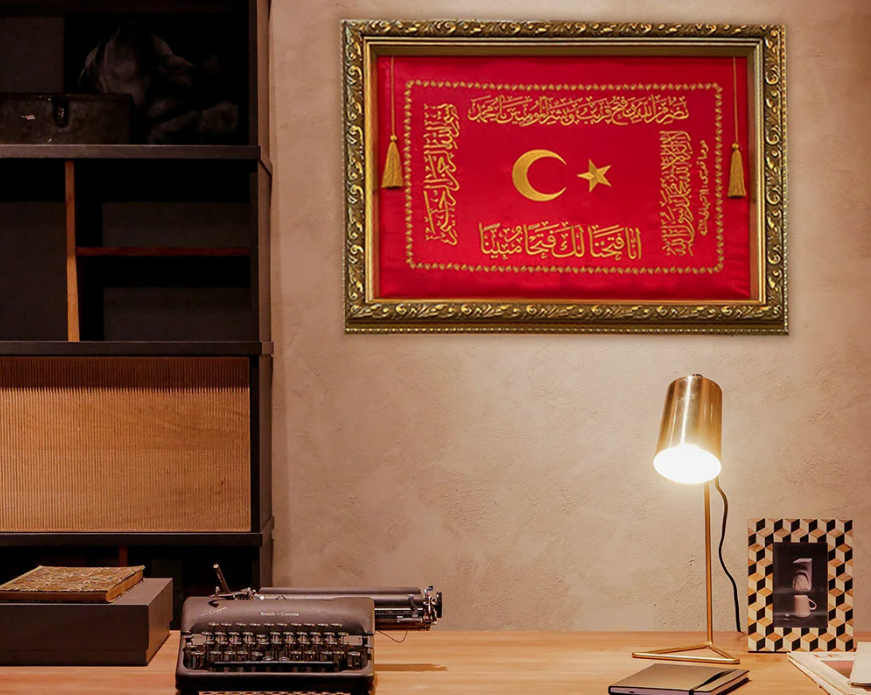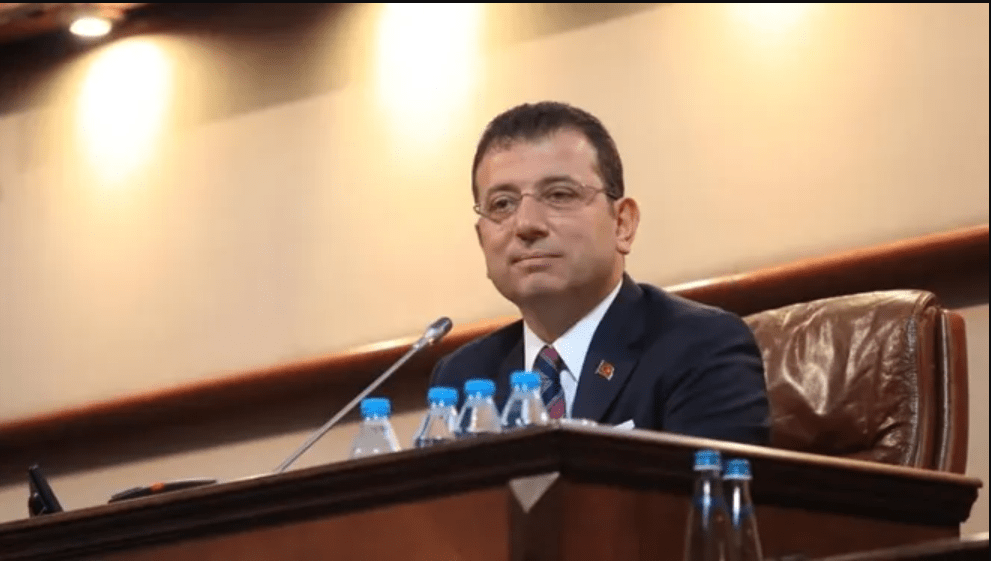None of the words “caliph”, “khalifa”, “khulafa”, “khalifas” in the Qur’an means “deputy of Allah”. It is reported that Abu Bakr objected to those who called him “Khalifatullah” meaning “Caliph of Allah” and asked to be called “Khalifatu Rasulillah” meaning “Caliph of the Messenger of Allah”.
The promotion from “Caliph of the Messenger of Allah” to “Caliph of Allah” took place during the Abbasid period, when power had to be protected by dogmatism. During the Abbasid period, with one exception, the caliphate passed from father to son (some of them as children), so superiority in religious knowledge and merit was not sought.
According to the Abbasids, the Caliph did not have to be sinless and infallible. For example, Caliph Mansur (d. 775) told his son Mahdi in his will, “Fear Allah and avoid sinning, for Allah will be your guide in times of difficulty.” During the reign of Mahdi (d. 785), the Abbasid palace, which reveled in poetry, fine arts, music, drinking and hunting parties, and conversation gatherings, moved away from asceticism and came close to being accused of heresy. It was rumored that his wife Hazeyran interfered in state affairs behind the scenes.
Harun Rashid (d. 808), described by Ibn Khaldun (d. 1406) as an ascetic and mujahid who “went to war one year and pilgrimage the next”, was actually a person fond of entertainment and drinking (palm wine). In fact, according to some sources, his reign was characterized by orgies. His attendant Abu Nuwas was known not only for his drinking, sodomy and debauchery, but also for his attitudes that questioned Islamic values. Harun Rashid’s son Me’mun (d. 833) was also fond of entertainment and drinking, but unlike the previous caliphs, he was a mature person interested in science and philosophy.
Beginning in 750, the Abbasid Caliphate ended when the Mongol Khan Hulagu entered Baghdad in 1258, and in 1261, under the Mamluks in Egypt, a “shadow/symbolic” Abbasid Caliphate began. In other words, a member of the Quraysh (?) lineage from which the Prophet (and his uncle Abbas, who gave the dynasty its name) descended, symbolically appeared as Caliph next to the political ruler.
Let me remind you how Ibn Khaldun (d. 1406) found a “solution” to the Quraysh issue. According to Ibn Khaldun, being close to a tribe in terms of “asabiyyah” and loving it meant being from that tribe! In other words, someone who was devoted to the Quraysh tribe was considered a Qurayshite! By this logic, there was no need for a Qurayshite, but they were still in the times when it was not difficult to find a Qurayshite…
Ottoman Caliphate
With a few exceptions, the landless and underpaid caliphs, who remained under the shadow of the sultans and had no political authority and power, remained in this situation until 1517, the end of the Mamluks. The date 1517 is accepted in our official history as “the year when Yavuz Sultan Selim I brought the Caliphate (Caliph Al-Mutawakkil III) to Istanbul”. But is it so?
First of all, it is known that the expression “caliph” was included in the congratulatory letter written by the Bey of Karamanoğlu upon Murat I’s conquest of Edirne, and that the term Şeref-i Hilafet was used in the reply to this letter. However, these expressions did not mean a classical Caliphate.
As a matter of fact, official history dates the Ottoman caliphate to 1517. According to legend, Yavuz took over the Caliphate with a ceremony in Cairo and sent the “shadow caliph” Mutawakkil III to Istanbul by sea in 1518. Again, according to the rumor, Al-Mutawakkil III handed over the Caliphate to its new owner by placing the “caliphate sword” on the sultan in ceremonies at Eyüp and Hagia Sophia in Istanbul. After a while, Yavuz Yavuz had Al-Mutawakkil imprisoned in Yedikule, where he remained until Yavuz’s death, returning to Cairo in 1520(?) with the permission of Suleiman the Magnificent, and dying in 1538 with the title of Caliph.
I said “narration” because among the sources of the period, only Hodja Sa’deddin Efendi mentions this event as follows: “While he had attempted to claim the caliphate, he had chosen a dervish costume and dress.” There is no other record. In Arab sources, however, al-Mutawakkil is still the “Caliph”.
Halil İnalcık also claims that “the fact that the last caliph from the Abbasid lineage handed over the caliphate rights to Yavuz in an official ceremony is just a myth invented in the 18th century.” (I will explain what happened in the 18th century below.)
Anyway, if the caliphate was something that passed with a change of clothes, the Mamluk sultans from 1260 to 1517 would probably not have bothered to employ an Abbasid Qurayshite. However, it is known that Yavuz sent the keys to Mecca and Medina and the holy relics to Cairo and used the title “Hâdim’ül Haremeyn eş- Şerifeyn” (Servant of Mecca and Medina) rather than “Caliph” during his reign. (By the way, let us remind that Yavuz swung his sword not against “kuffar” but against “believers” throughout his reign).
His successor Suleiman the Magnificent asked his Grand Vizier Lutfi Pasha to clarify “the condition that the Caliphate must be from the tribe of Quraysh”. Lütfi Pasha, in his 1554 work Halâs’ül-ümme fi ma’rifeti’l-eimme, recalls Ibn Khaldun’s thesis and discovers that there is no requirement to be from the Quraysh tribe to become a caliph!
Another important support for Suleiman the Magnificent’s assumption of the title of caliph came from Ebussuud Efendi, who served as Sheikh ul-Islam for 29 years without interruption. Ebussuud completely ignored the Quraysh issue and “solved” the issue in the Iskendervarian style by inserting phrases in laws and official documents stating that the sultan was the caliph of all Muslims (Khilafat-i Kübrâ).
There is no study on whether the post-Quranic sultans used this title. However, after the phrase “Caliphate and Caliph of Muslims” in the Treaty of Little Kaynarca of 1774, which started the Decadence Period, and the phrase in Muradgeae D’osson’s (known as Tosun Pasha) “Tableau Genarel de I’empire Ottoman”, Europeans began to see the “Caliph” as the equivalent of the Pope.
Abdulhamid’s Caliphate
By the mid-19th century, when Westernism and Ottomanism were bankrupt, Islam re-entered the agenda as a savior ideology, just like today. Since the 1856 Edict of Reform, intellectuals such as Ziya Pasha and Namik Kemal, who were disturbed by the rights granted to non-Muslims, clung to Islamist thought. The idea of preventing the successive territorial losses with the regrouping and regenerative power of Islam and even restoring the borders to their former state was the main motive of Abdülhamit II’s domestic and foreign policies. For this purpose, according to Halil İnalcık, the issue of the ‘Caliphate’, which was a myth created in the 18th century, was ‘rediscovered’ and Article 4 of the Constitutional Law of 1876 reads “The Sultan of the Sultanate hasbel hilâfe is the protector of religious Islam…” and the rest is history. Uniform Qurans were printed and distributed both within the country and as far away as Turkestan, India and Java, the security of the pilgrimage routes was ensured, huge investments were made in Arab provinces, and people of Arab origin were appointed to important positions. Abdulhamid did not lack Arab scholars around him. On the one hand, this approach reconciled the center with the ‘Tribe of Najib’, aroused the excitement of Muslims in the far corners of the world, and on the other hand, it helped the first nuclei of political Islamism to emerge.
The “Jihad Made in Germany” fiasco
The end of the Caliphate, which “shone” for a short time, was legally brought about by the Kemalists on March 3, 1924, but it was the Unionists who deposed Abdülhamid II who actually brought about its end. On November 11, 1914, immediately after the Ottoman Empire declared war on the Entente, the Germans established the Eastern Intelligence Service (Nachrichtenstelle für den Orient) in Istanbul. Headed by Max Freiherr von Oppenheim, a German archaeologist who would later become famous as the “Kaiser’s Spy” (Figure 1), the bureau was assisted by members of Teşkilat-ı Mahsusa, the underground organization of the İTC.

The most important aim of the mission was to encourage Muslim soldiers in the armies of the Entente to revolt against their Christian commanders in case of war. The bureau’s first success was to convince Enver Pasha, the Minister of War, and Cemal Pasha, the Minister of Interior, that the call for jihad would be beneficial. They in turn convinced Sultan Mehmed V. As rumors were spreading that Kaiser Wilhelm II had converted to Islam, Sheikh ul-Islam Ürgüplü Hayri Efendi issued a five-part fatwa on November 14, 1914.
The fatwa, which was printed in 500,000 copies in four languages – Ottoman, Arabic, Persian, Urdu and Tatar – so that all Muslims of the world could understand it, also had the signatures of three former Sheikh ul-Islams, 11 kazaskeris and 14 leading religious scholars of the time.
The fatwa, signed with a pen gifted by Mahmud I to Hacı Nuri Bey, one of Hayri Efendi’s ancestors, was ceremoniously taken from the Mashihat building in Süleymaniye to the Fatih Mosque, where it was read by Ali Haydar Efendi, the Fatwa Emini, to thousands of people waiting in the courtyard of the mosque.

In the fatwa, it was stated that it was obligatory for everyone to participate in the Sultan’s order for jihad; that all Muslims under the rule of Russia, Britain and France, who wanted to abolish the Islamic Caliphate, must unite against these states; that those who did not comply with this order would be subject to severe punishments; that Muslim soldiers subject to Russia, Britain and France who killed Islamic soldiers or fought against Germany and Austria would be guilty of great sin; and that the Muslim world was called to fight on the side of the Axis Powers against the Entente.

Addressing both Sunnis and Shiites, the fatwa portrayed Britain, France and Russia as enemies of Islam, and Germany as a friend of the Caliph and Islam. Millions of copies of this Fatwa-i-Sharia and the accompanying declaration, which would later be known as ‘Jihad-i-Akbar’ to give it a special and sacred meaning, were printed and distributed in the regions where Muslims lived. In response to this call, the Allied Powers arranged for letters to be written by many religious sheikhs, ulema, tribal chiefs, mufti, the Sultan of Morocco, the Governor of Tunisia and the Governor of Algeria in North and West Africa.
The first 160 pages of the French magazine Revue du Monde Musulman, in which these letters were published, were reproduced by the millions and distributed to people in the French colonies of Mauritania, Senegal, Mali and Guinea. Mali and Guinea
In fact, we all know what the result was.
In the words of the Dutch Orientalist Hurgronje, who described it as “a play in the style of the Offenbach operettas” the “German-made Jihad” was not enough to revolt Britain’s Muslim subjects and save the Ottoman Empire; its most important result was the decimation of the local Christian populations. It was a miracle that the de facto dysfunctional Caliphate survived until 1924.

Today, it is clear that there is a highly successful project to religiousize the social and political structure, but it seems unlikely to me that they will revive an office that had no function even in the most glorious period of the Ottoman Empire…
Taken from historian Ayşe Hür’s social media page: link





